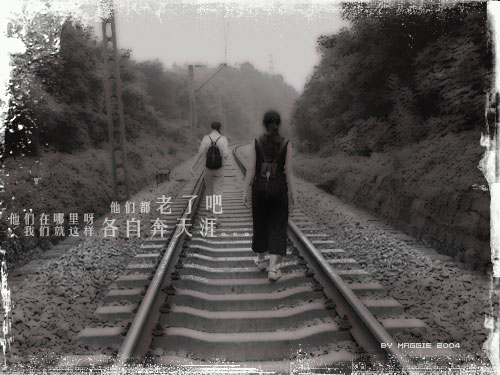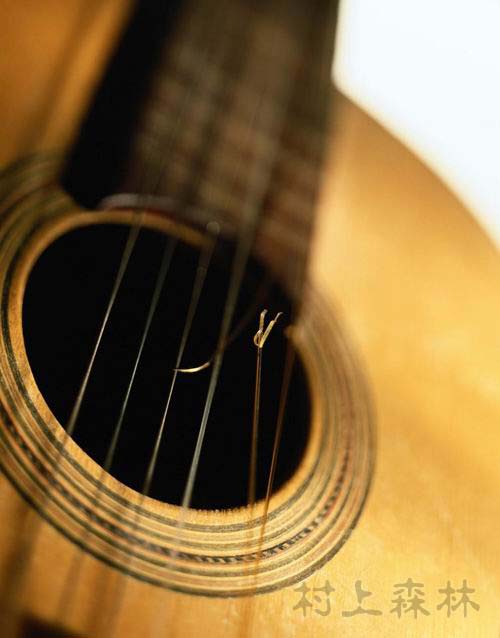Rainy Weather, Hot Weather
From Daphne to Karie
From Daphne to Karie
by Haruki Murakami
Translated by Christopher Allison
The boat arrived at the harbor at Daphne. From a distance, it looked
like any other normal port anywhere in Greece. As we drew closer,
however, several aberrations from the norm became apparent. The
foremost was that there were only men. In a place where women are
forbidden this was only to be expected, but when I was actually
confronted with a scene in which not one single woman was present,
the effect was suitably profound. There were around a hundred people
gathered in the vicinity of the port, but miraculously every single
one was male. On top of that, the majority were monks. The scene was
thus unusually dark. At last, the Holy Land.
In addition, there were not any identifiable tourists as far as the
eye could see, an extremely unusual state of affairs during the
Greek summer. There were no stout German couples, no easy-going
backpackers with the Canadian flag stitched to their packs.
Naturally, there were some people who seemed to be traveling (they
had arrived thirty minutes before on the ferry that we had missed).
But they were almost all Greek. Moreover, they all wore very
simple--that is to say, average Greek--clothing. They were devout
men (no devout women) who had come from all over Greece to make a
pilgrimage to the holy High Temple of Orthodoxy. The multitude of
thronging monks were all wearing the conventional baggy robes of
Greek Orthodox holy men. On their heads they wore cylindrical hats
that looked something like birthday cakes. Additionally, they all
had long beards. I'm not that familiar with Greek Orthodox faith,
but I imagine that shaving is contrary to its precepts or something.
Their beards were all long and, like a samurai's topknot, were
clasped firmly at the end. Seeing monk thus attired was a daily
occurrence throughout Greece, but I had never seen so many together
in one place before. As I studied this seen with interest, I began
to notice subtle differences in their garments and possessions.
There were some who appeared to be die-hard ascetics, wearing
horribly tattered robes and ropes made of straw around their waists.
They looked more like beggars than monks. Interesting. But then
immediately next to these, there were trendy-yuppie monks whose
robes were completely free of wrinkles, as if they had just picked
them up from the cleaners that very morning, with attache cases in
their hands and sunglasses hiding their faces. And between these two
extremes, there were monks of every conceivable point along the
gradation. I wish I could have brought them all together in one
single line and arranged them according to their outward
appearances.
I couldn't comprehend why so many different styles existed among the
monks of a single sect, living on this narrow peninsula.
And it wasn't just clean vs. dirty, either; the color of the robes
were also magnificently varied. From pale gray to deep purple to
darkest black, the spectrum was complete. I couldn't judge whether
it was because the monasteries each had different colors, or whether
they varied according to rank or position. And could there really be
differences between monks in terms of financial means, between the
hip and the square, between the ascetic and the liberal? The more I
thought about it, though, the more I came to realize that, well,
it's just like that, and ended up accepting it as it was.
It's just like that.
(What I came to realize later is that they really are all
individually different. Depending on the monastery they are attached
to, and their chosen manner of living, there are substantial
variances. Athos is thus a place where one is allowed to choose his
own lifestyle and how he spends his time. Therefore their individual
differences in appearance reflected real differences beneath.)
As soon as you get into the harbour at Daphne, there is a
passport-control type of place. You deposit your passport there and
then go to the capital, Karie. The administrative offices for mount
Athos are at Karie, and after a customs inspection, you are issued a
document granting permission of stay. If you don't have this
document, you cannot walk around Mount Athos. They're quite strict.
You go by bus from Daphne to Karie. As buses go, it's a pretty
pathetic example, but it still runs, and that's what counts. I've
guess that it's been in use for at least 30 years. Any vehicle so
long in service seems like it would have used up it's share of
divine protection long ago. This is the only bus in the whole
region. We got there just as the bus was leaving, but there weren't
any seats left so we couldn't go. We tried asking if we if we might
get on anyway, but were told bluntly "No." The driver certainly was
not the kindest fellow in the world. We had to wait until the bus
went to Karie and then came back, which would take an hour all
together. Thus, we would be another hour behind schedule. It seemed
like one had no choice but to be in a hurry while in Athos. But I'm
not at all a hurrying kind of person. Just as the bus was departing,
a monk, looking to be in his mid-fifties, walked up to the bus and
started pounding on the window, yelling "Hey, let me in." The bus
driver said "It's full. Go away," but he just kept pounding on the
closed door. Finally, the bus driver gave up and opened the door,
and the monk got on. His gaze was fixed, the pounding of his fist
was firm, he was like a steamroller. I wondered whether it was
appropriate for someone who had taken holy orders to act this way. I
truly didn't understand this place at all. From the very beginning
there were so many things that I perplexed me. But there was no
alternative, so we sat there and waited for an hour.
At the Daphne harbour, there stand a small post office, a small
customs house, and a small police station. There's also a cafe. And
there are three small general stores. While we waited for the bus, I
bought some emergency rations and stuffed them in my backpack. I had
figured that as soon as we set foot in Athos we would no longer be
able to buy anything from the outside world. Surprisingly, though,
the general store had a fairly normal assortment of goods. The boxes
were covered with dust and the cans of food had spots of rust on
them, but if such things didn't bother you, their selection wasn't
bad at all. They had every conceivable type of liquor, from J&B
down to cheap ouzo, canned meats and fish, instant coffee, candy.
Perhaps pilgrims stopped here on their way to the monasteries, in
order to augment the scanty meals served there. I'm not sure whether
the monks shopped here or not. But whatever the case may be, Athos
didn't seem to be the strict, stoic place of its reputation.
Otherwise, why would all this stuff be here? (Later on, I found out
why: In addition to the monks, many laborers come to the peninsula,
and it's necessary for them to be able to get daily supplies.)
I also bought wine, bread, cheese, a can of corned beef, pears,
crackers, and four lemons (these lemons later proved to be an
albatross around my neck). I filled my canteen. I also bought a map
of the peninsula. Then I went into the cafe and, drinking what would
be my last beer, ate a little bread. I dozed by the wharf until the
bus came.
At the wharf, there were two dogs and four cats. Examining them
closely in to test the rule, I found that both dogs were clearly
male. In addition, I found that both had sacrificed their sexual
equipment, valiantly and yet sadly. Very well; perfectly in
accordance with the rule. Unfortunately, I wasn't able to discern
the sex of the cats. Compared to the dogs, the cats of this land
seemed to be of very serious disposition, and they were not kind
enough to allow close inspection of their genitalia. Moreover,
distinguishing males from females among cats is much more difficult
than among dogs.
With my experiment not yet complete, and the cats staring at me
suspiciously from the top of the wall all the while, the bus came
back down the mountain. It was finally time to penetrate into the
interior of Athos.

